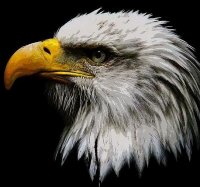- Posts: 6393
- Thank you received: 18
Science Odds and Ends
- LOL
-

- Mountain Legend
-

Coal Lobby Warns Wind Farms May Blow Earth Off Orbit
"Panelists debate whether the U.S. is doing enough to heed the warnings of coal industry scientists who say turbines could blow the Earth right into the sun."
If you want to be, press one. If you want not to be, press 2
Republicans are red, democrats are blue, neither of them, gives a flip about you.
Please Log in or Create an account to join the conversation.
- ScienceChic
-
 Topic Author
Topic Author
- Mountain Champion
-

- Posts: 15739
- Thank you received: 319
"Now, more than ever, the illusions of division threaten our very existence. We all know the truth: more connects us than separates us. But in times of crisis the wise build bridges, while the foolish build barriers. We must find a way to look after one another as if we were one single tribe.” -King T'Challa, Black Panther
The truth is incontrovertible. Malice may attack it. ignorance may deride it, but in the end, there it is. ~Winston Churchill
Please Log in or Create an account to join the conversation.
- LOL
-

- Mountain Legend
-

- Posts: 6393
- Thank you received: 18
Haha
If you want to be, press one. If you want not to be, press 2
Republicans are red, democrats are blue, neither of them, gives a flip about you.
Please Log in or Create an account to join the conversation.
- LOL
-

- Mountain Legend
-

- Posts: 6393
- Thank you received: 18
Pi is being replaced by Tau.
"Tau Day, in honour of the constant some say should replace pi, is being celebrated by those who agree with US mathematicians Bob Palais and Michael Hartl. The two argue that tau, twice as large as pi at approximately 6.28, makes many calculations easier to perform.
In The Tau Manifesto, Hartl says that although pi is well- defined, it's "a confusing and unnatural choice for the circle constant...Pi is half of something. It's the something that is fundamental.""
If you want to be, press one. If you want not to be, press 2
Republicans are red, democrats are blue, neither of them, gives a flip about you.
Please Log in or Create an account to join the conversation.
- ScienceChic
-
 Topic Author
Topic Author
- Mountain Champion
-

- Posts: 15739
- Thank you received: 319
New technology makes textiles permanently germ-free; targets health care-associated infections
July 5, 2011
The paperA University of Georgia researcher has invented a new technology that can inexpensively render medical linens and clothing, face masks, paper towels -- and yes, even diapers, intimate apparel and athletic wear, including smelly socks -- permanently germ-free.
The simple and inexpensive anti-microbial technology works on natural and synthetic materials. The technology can be applied during the manufacturing process or at home, and it doesn't come out in the wash. Unlike other anti-microbial technologies, repeated applications are unnecessary to maintain effectiveness.
According to the Centers for Disease Control and Prevention, approximately one of every 20 hospitalized patients will contract a healthcare-associated infection. Lab coats, scrub suits, uniforms, gowns, gloves and linens are known to harbor the microbes that cause patient infections.
Other markets for the anti-microbial technology include military apparel and gear, food packaging, plastic furniture, pool toys, medical and dental instrumentation, bandages and plastic items.
http://www.physorg.com/news/2011-07-cli ... wable.html
'Cling-film' solar cells could lead to advance in renewable energy
July 4, 2011
The paperThe study, published in the journal Advanced Energy Materials, paves the way for new solar cell manufacturing techniques and the promise of developments in renewable solar energy. Plastic (polymer) solar cells are much cheaper to produce than conventional silicon solar cells and have the potential to be produced in large quantities. The study showed that when complex mixtures of molecules in solution are spread onto a surface, like varnishing a table-top, the different molecules separate to the top and bottom of the layer in a way that maximises the efficiency of the resulting solar cell.
Rather than using complex and expensive fabrication methods to create a specific semiconductor nanostructure, high volume printing could be used to produce nanoscale (60 nanometers) films of solar cells that are over a thousand times thinner than the width of a human hair. These films could then be used to make cost-effective, light and easily transportable plastic solar cell devices such as solar panels."
"Now, more than ever, the illusions of division threaten our very existence. We all know the truth: more connects us than separates us. But in times of crisis the wise build bridges, while the foolish build barriers. We must find a way to look after one another as if we were one single tribe.” -King T'Challa, Black Panther
The truth is incontrovertible. Malice may attack it. ignorance may deride it, but in the end, there it is. ~Winston Churchill
Please Log in or Create an account to join the conversation.
- TPP
-

- User is blocked
-

- Posts: 4760
- Thank you received: 0
Technology
The HULC! Catch a Glimpse of the New ‘Exoskeleton’ That Could Revolutionize the Battlefield
The fact that Lockheed Martin’s latest piece of Army equipment is called the HULC (pronounced like the comic book character The Hulk) is appropriate. That’s because the pack management system works as a superhuman “exoskeleton.”
The name stands for Human Universal Load Carrier, and it’s meant to lighten a soldiers individual load while out in the field while also allowing him to carry things never thought possible. The description from Lockheed Martin is incredible:
"The HULC is a completely un-tethered, hydraulic-powered anthropomorphic exoskeleton that provides users with the ability to carry loads of up to 200 lbs for extended periods of time and over all terrains. Its flexible design allows for deep squats, crawls and upper-body lifting. There is no joystick or other control mechanism. The exoskeleton senses what users want to do and where they want to go."
Up to 200 lbs over all terrains? Senses what users want to do? That‘s what they’re saying. And it’s all battery powered.
http://www.theblaze.com/stories/the-hulc-catch-a-glimpse-of-the-new-exoskeleton-that-could-revolutionize-the-battlefield/
Please Log in or Create an account to join the conversation.
- ScienceChic
-
 Topic Author
Topic Author
- Mountain Champion
-

- Posts: 15739
- Thank you received: 319
Triceratops Bones Support Asteroid Extinction Theory
By Wired UK Email Author
July 13, 2011
Palaeontologists in America have discovered the youngest known dinosaur bones, after digging up the fossilized remains of a Triceratops or Torosaurus’ 45cm-long brow horn.
But what makes this find — from the Hell Creek Formation in the wastelands of south-east Montana — even more special is its ramifications for the current theories on what wiped out the prehistoric lizards.
It’s generally believed that a colossal asteroid pummeled into Mexico’s Yucatan Peninsula about 65 million years ago, which led to a mass extinction of any animal that couldn’t fly, swim or burrow into the ground.
But some skeptics believe that the dinosaurs were already on a sharp decline, or even extinct, when the asteroid hit.
This newly discovered brow horn was found just 13cm below that all-important line. It proves that this Ceratopsian dinosaur (probably a Triceratops or Torosaurus) was wandering about right up to the impact event, and the authors believe this debunks the dissenting theory.
I wonder how they sound?
http://www.physorg.com/news/2011-07-win ... power.html
Wind-turbine placement produces tenfold power increase, researchers say
July 13, 2011 by Kathy Svitil
The power output of wind farms can be increased by an order of magnitude -- at least tenfold -- simply by optimizing the placement of turbines on a given plot of land, say researchers at the California Institute of Technology (Caltech) who have been conducting a unique field study at an experimental two-acre wind farm in northern Los Angeles County.
Dabiri's experimental farm, known as the Field Laboratory for Optimized Wind Energy (FLOWE), houses 24 10-meter-tall, 1.2-meter-wide vertical-axis wind turbines (VAWTs)—turbines that have vertical rotors and look like eggbeaters sticking out of the ground. VAWTs are ideal, Dabiri says, because they can be positioned very close to one another. This lets them capture nearly all of the energy of the blowing wind and even wind energy above the farm. Having every turbine turn in the opposite direction of its neighbors, the researchers found, also increases their efficiency, perhaps because the opposing spins decrease the drag on each turbine, allowing it to spin faster (Dabiri got the idea for using this type of constructive interference from his studies of schooling fish).
The solution, says Dabiri, is to focus instead on the design of the wind farm itself, to maximize its energy-collecting efficiency at heights closer to the ground. While winds blow far less energetically at, say, 30 feet off the ground than at 100 feet, "the global wind power available 30 feet off the ground is greater than the world’s electricity usage, several times over," he says. That means that enough energy can be obtained with smaller, cheaper, less environmentally intrusive turbines—as long as they're the right turbines, arranged in the right way.
Neuroscience questions of "How do we think and perform tasks at the cognitive level" fascinate me. I remember having a 3 hour conversation with a friend once about the physical basis of how memories are formed and stored - what a fun thought exercise! When you're in the mood for some brain exercise, read this article below! The descriptions of the experiments are cool, in and of themselves.
http://blogs.scientificamerican.com/tho ... A_facebook
Rats, Bees, and Brains: The Death of the “Cognitive Map”
By Jason G. Goldman | July 12, 2011
Humans, just like all other animals, face the same problem every day: how do we get around the world? I don’t mean how do we walk, swim, crawl, or fly. I mean, how do we navigate? If I leave in search of food, how do I find my way back home?
Ask most people how they manage to navigate the world, and many will tell you that they think about the space around them in map-like terms. Perhaps they will explain that they imagine a bird’s-eye view of their neighborhood. This, they will insist, allows them to get to the store from the office, even if they have never driven that particular route before (they usually drive to the store from home, never from the office).
For most of the past century, cognitive psychologists would have argued that human intutions happened to be correct when it came to the existence of a “map within the mind.” Our story starts in the 1940s, with a group of rats at UC Berkeley in the laboratory of experimental psychologist Edward Tolman… For more than thirty years, the existence of the cognitive map was generally accepted in psychology. But by the early nineties, the cognitive map began to fray.
...our internal representations of the environment are not map-like.
"Now, more than ever, the illusions of division threaten our very existence. We all know the truth: more connects us than separates us. But in times of crisis the wise build bridges, while the foolish build barriers. We must find a way to look after one another as if we were one single tribe.” -King T'Challa, Black Panther
The truth is incontrovertible. Malice may attack it. ignorance may deride it, but in the end, there it is. ~Winston Churchill
Please Log in or Create an account to join the conversation.
- TPP
-

- User is blocked
-

- Posts: 4760
- Thank you received: 0
Nuclear Event in Japan on Friday, 11 March, 2011 at 12:38 (12:38 PM) UTC.
Updated: Monday, 11 July, 2011 at 06:18 UTC
Description:
Radioactive cesium beyond the legal limit has been detected in the meat of 11 cows shipped to a meatpacking plant in Tokyo from a farm in Minami-Soma, Fukushima Prefecture, the Tokyo metropolitan government said Saturday. On Friday, the metropolitan government found that meat of one of the 11 cows shipped from the farm to the meatpacking plant in Minato Ward, Tokyo, contained radioactive cesium measuring 2,300 becquerels--4.6 times the provisional legal limit of 500 becquerels per kilogram. On Saturday, the metropolitan government conducted similar inspections on the remaining 10 cows and found they were contaminated with radioactive cesium at three to 6.4 times the legal limit. Meat from the 11 cows was not distributed to the market. On Friday night, the Fukushima prefectural government asked Minami-Soma to refrain from selling beef cattle. It is the first time radioactive cesium beyond the limit set by the Food Sanitation Law has been found in meat, according to the Health, Labor and Welfare Ministry.
A ministry official downplayed the danger of the beef, saying, "Even if people eat the meat with an excessive level [of radioactive cesium], the radiation dose is very small and won't affect human health." The ministry has started backtracing six cows that were shipped from the Minami-Soma farm between May 30 and June 30. The farm is in an area between 20 and 30 kilometers from the Fukushima No. 1 nuclear power plant that is designated as an emergency evacuation preparation zone. In April, the Agriculture, Forestry and Fisheries Ministry informed the Fukushima prefectural government that cows raised in the planned evacuation zone and emergency evacuation preparation zones can be shipped if the surfaces of their bodies are checked for radioactive substances and the safety of their forage and water is confirmed. The 11 cows from the Minami-Soma farm Friday were judged safe following testing by the Fukushima prefectural government. However, an excessive level of radioactive cesium was found in the meat of one of the cows when the Tokyo government conducted a sample test later that day.
http://hisz.rsoe.hu/alertmap/site/?pageid=event_update_read&edis_id=NC-20110311-29877-JPN&uid=11054
Please Log in or Create an account to join the conversation.
- ScienceChic
-
 Topic Author
Topic Author
- Mountain Champion
-

- Posts: 15739
- Thank you received: 319
Mutant two-headed snake wows visitors at Ukrainian zoo
July 14, 2011
The small albino California Kingsnake, now on show in the Black Sea resort of Yalta is quite a handful, zoo workers told AFP.
The snake's two heads are fiercely independent, are not always in agreement and like to snatch food from each other, said keepers of the private zoo, called Skazka, or Fairy Tale.
"If it is really hungry, its heads may steal food from each other," he said, adding he also needs to separate the heads with a barrier. "The second head may get angry, but both then feel satiation because they only have one stomach," he told AFP.
The three-year-old, two-foot-long (60 centimetre) reptile is on loan from Germany.
http://www.wired.com/wiredscience/2011/ ... ne-memory/
Search Engines Change How Memory Works
By Brandon Keim Email Author
July 14, 2011
Thanks to search engines, most simple facts don’t need to be remembered. They can be accessed with a few keystrokes, plucked from ubiquitous server-stored external memory — and that may be changing how our own memories are maintained.
A study of 46 college students found lower rates of recall on newly-learned facts when students thought those facts were saved on a computer for later recovery.
If you think a fact is conveniently available online, then, you may be less apt to learn it.
As ominous as that sounds, however, study co-author and Columbia University psychologist Elizabeth Sparrow said it’s just another form of so-called transactive memory, exhibited by people working in groups in which facts and expertise are distributed.
The future of medicine has begun!
http://www.popsci.com/science/article/2 ... able-teeth
Mice Molars Grown From Stem Cells Form Fully Functional, Transplantable Teeth
By Clay Dillow
Posted 07.13.2011
What a week for stem cell-related surgeries. Not seven days ago surgeons in Europe announced the successful transplantation of the world’s first lab-grown organ --a trachea--grown from a patient’s own stem cells, and now Japanese researchers are saying they’ve grown and successfully transplanted new stem-cell derived teeth in mice.
Alright, so the mouse news may be somewhat dwarfed by the human trachea, but it’s no less groundbreaking from a “future of medicine” standpoint. In both cases, scientists extracted cells from the body, grew body parts outside of the body, and then put those body parts into the body. And the bodies, for their part, seem unbothered by the switch.
I don't know that I'd call this groundbreaking, as it's been hypothesized for some time now, it just hasn't had much evidence to figure out how important in the scheme of things this process was. Jumping genes make geneticists very uncomfortable!
http://www.physorg.com/news/2011-07-sci ... heory.html
Scientists present evidence for groundbreaking evolution theory
July 14, 2011
The paperPhD student Keith Oliver and Associate Professor Wayne Greene have spent the last two years gathering a wealth of evidence which proves that what are commonly known as jumping genes are actually driving the evolutionary process in some species.
Jumping genes are sequences of DNA that can move to new positions within the genome of a cell. This movement can create mutations and therefore change the observable characteristics of a species.
Their latest scientific paper on the idea brings together around 100 examples of where the activity of jumping genes have created or greatly-modified primate and human genes, resulting in the generation of well-known primate-specific traits.
“In fact, it’s very hard to see how primates and humans could have evolved in the way they have, without the intervention of jumping genes.”
Mr Oliver and A/Prof Greene have further developed their theory into four modes that help shed light on why evolution sometimes occurs in fits and starts, sometimes gradually and sometimes hardly at all. Therefore, their jumping gene theory helps to explain a number of mysteries in biology, including why species suddenly appear in the fossil record, why some groups of organisms are species-rich and others are species-poor. “With this work we are unquestionably standing on the shoulders of others that have worked on jumping genes, but we are certainly the first to bring all their work together for what we believe is the most persuasive case ever put forward on the pivotal role of jumping genes in evolution.”
"Now, more than ever, the illusions of division threaten our very existence. We all know the truth: more connects us than separates us. But in times of crisis the wise build bridges, while the foolish build barriers. We must find a way to look after one another as if we were one single tribe.” -King T'Challa, Black Panther
The truth is incontrovertible. Malice may attack it. ignorance may deride it, but in the end, there it is. ~Winston Churchill
Please Log in or Create an account to join the conversation.
- TPP
-

- User is blocked
-

- Posts: 4760
- Thank you received: 0
[center:3gind5pq]How to Keep Beer Cold [/center:3gind5pq]
[center:3gind5pq] [/center:3gind5pq]
The Experiment: Beer drinking is one of the world’s favorite pastimes. So as the weather started heating up, we felt a scientific duty to investigate this burning beer-related question: what is the most effective beer can cozy?
We took temperature measurements using a digital thermometer with a metal probe. In most of the experiments, the probe was submerged 5.5 cm into the beer, at the approximate midpoint of the can. All experiments were performed outdoors, with ambient temperatures varying from 90F (32.2C) to 103F (39.4C). Except as noted, all beverages used were 12 oz. (355ml) domestic beers. The starting temperatures for the beers ranged between 35.7F (2.1C) and 43.7F (6.5C)
[center:3gind5pq] [/center:3gind5pq]________________________________________
How Effective Are Beer Cozies?
One of the first questions we must address is:
Do beer cozies actually work? Do they keep canned beverages cold, or are they just another platform for humorous slogans and advertising logos? To determine the effectiveness of various types of cozies, we selected five representative models that typified widely available beer can cozies:
• A can holder made by Coleman, made of a red vinyl-like material
• A neoprene cozy imprinted with a camouflage design
• A premium model made of a pewter casing with a black foam liner, embossed with the number and colors of NASCAR racer Jeff Gordon
• A foam rubber cozy imprinted with a humorous slogan
• A soft vinyl/plastic-like cozy with the colors and number of NASCAR racer Tony Stewart
We tested these cozies for an hour and measured the temperature of their contents against those of an uninsulated beer can.
Staging Area:Wooden table on covered patio
Ambient Temperature: 103F (39.4C)
Initial Beer Temperature: 37F (2.8C)
[center:3gind5pq] [/center:3gind5pq]
Results: All of the cozies had some effect and kept beer colder than the uninsulated can. Out of the five, the two that performed the best were the most expensive model, the metal and foam NASCAR cozy, and one of the least expensive, the foam rubber model. The terminal temperatures of the beer in each was 59.3F (15.2C) and 59.5F (15.3C) respectively – about 15 degrees below the final temperature of the naked can (74.3F/23.5C). The neoprene cozy and the plastic NASCAR cozy were both reasonably effective, keeping the beer 9.4 (64.9F/18.3C) and 11.2 (63.1F/17.3C) degrees cooler, respectively. The Coleman can holder was the least effective, keeping the can only 7.2 degrees cooler (67.1F/19.5C)
Conclusions: Depending on their material, beer can cozies can be effective in keeping beer cool even in extremely hot weather. The two cozies that performed the best employed a layer of dense foam about half an inch thick, which prevents heat transferring into the cans and the beer by limiting convection and conduction. A cheap beer cozy can be just as effective as a more expensive cozy, provided you get the right type. On the other hand, an ineffective can cozy, while it may improve your grip on the can or keep your hand dry, will not do much to keep your beer cold.
Read the results of bottle cozies, and other results...
http://www.myscienceproject.org/beer.html
Please Log in or Create an account to join the conversation.













